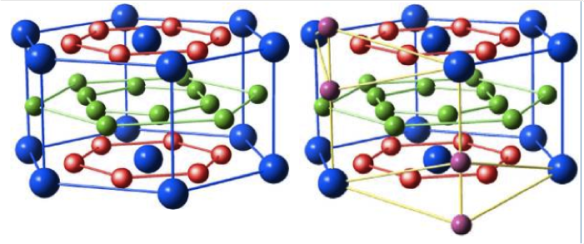SmCo magnets – May the 4th be with you
What does it look like?

Left, SmCo5 structure, with the large Sm atoms in blue and the green and red atoms representing the Co atoms. Left is the structure of the SmCo7 alloy, where one of the Sm atoms is replaced by two Co atoms (purple). Image from http://www.mpie.de/index.php?id=3356
What is it?
Finding a material, with a crystal structure that crossed from the Star Wars universe to ours was quite a tough ask. For instance Carbonite, the carbon-based material which Han Solo unfortunately gets stuck in for a while, is on Earth either a very old explosive substance or a very hard to get ion of carbon and oxygen. None of which had much solid or crystalline to write about. So what about the mystical 'force' that pervades the Star Wars universe? In our world the closest thing would have to be magnetic force, and what could be stronger than a rare-earth magnet?
We’ve already featured Neodymium magnets, so today is another type of rare earth magnet, Samarium Cobalt magnets. Specifically we're featuring SmCo7, which is an alloy with a strange crystal structure, based on the CaCu5 structure. The difference is that one of the Sm atoms is replaced by two Co atoms in a 'dumbbell' arrangement.
Physics today has quite a good understanding of the force of magnetism, and we are now able to manipulate it to our whims (like Jedi masters?). Though you do have to admit that the way it interacts with ferrofluid is rather magical.






